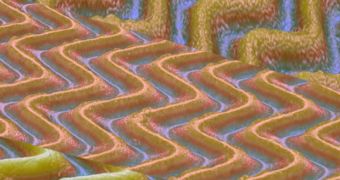Scientists at the Massachusetts Institute of Technology (MIT), in Cambridge, say that they were recently able to develop a new technology for producing advanced materials with rare properties.
According to a press release from the Institute, experts now harness a principle that is omnipresent in nature, which acts for example when a raisin becomes wrinkled. The process is a consequence of the fact that the pulp inside the fruit dries up.
As a direct result, the skin of the raisin becomes stiff, and then tends to buckle, so that it can accommodate its shrinking size. The same relationship between cause and effect can now be harnessed to produce materials with surfaces wrinkled in specific patterns and sizes.
One of the first applications that springs to mind for this technology is in metamaterial research, where scientists are trying to develop artificial structures that can bend and control the flow of light. Producing invisibility cloaks would then be just a small step away.
In addition, wrinkled surfaces would come in handy for applications in biological research, new photonic devices, controllable adhesive surfaces, antireflective coatings, microfluid device technologies, antimicrobial substances, and sensing and diagnostic tools.
MIT postdoctoral students Jie Yin and Jose Luis Yagü were the co-authors of a new paper detailing the findings, which is published in the latest issue of the esteemed scientific journal Advanced Materialss.
Former MIT student Damien Eggenspieler, and professors Mary Boyce and Karen Gleason, were also a part of the team that participated in the new investigation. The group says that the technique they developed requires the use of two layers of material.
The first one, the foundation, is a stretchable polymer based on silicon. The second layer is also made up of a polymeric-type material, which is places on the substrate via a technique called initiated chemical vapor deposition (iCVD).
“One distinguishing feature of what we’re showing is the ability to create deterministic two-dimensional patterns of wrinkles. The deterministic nature of these patterns is very powerful and yields principles for designing desired surface topologies,” Boyce says.
“One important application is the measurement of ultra-thin-film material properties without knowing the thin-film thickness,” Yagüe concludes.

 14 DAY TRIAL //
14 DAY TRIAL //